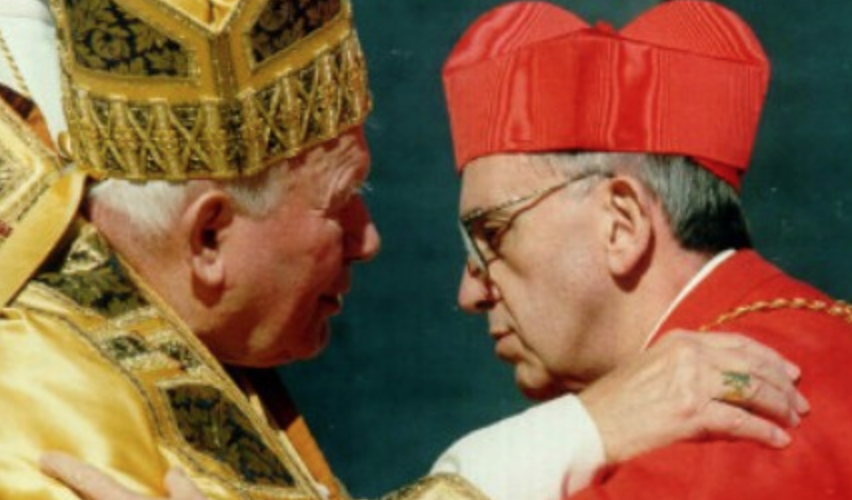
I have noticed something strange in recent weeks, when reading news coverage — mainstream and Catholic — of the recent Vatican Amazonian synod of bishops.
Increasingly, I am finding that conservative and progressive Catholics sort of agree on what is happening in their global Communion. What they disagree on is whether it is good or bad, small-o orthodox or potentially heterodox.
They may also have different views of which potential synod “reform” is the most important, but they pretty much agree on what the big three or four topics of debate were during the proceedings. Click here for an analysis of that by my colleague Clemente Lisi.
This leads me to this weekend’s think piece, which is a First Things essay by the conservative Catholic intellectual George Weigel, official biographer of the late St. Pope John Paul II. We are dealing with a conservative thinker here — obviously — but one who is frequently creatively optimistic in terms of his views of trends in the church in the age of “the new evangelization.” This is a rather different mood, for Weigel.
The title: “There’s a pony in here somewhere: A post-synodal reflection.” I will allow readers to dig into the earthy Ronald Reagan parable that led to that title.
The positive pony hidden in the synod, Weigel opines, is that, “The Cards are Now Face-up on the Table,” in terms of discussions about what is happening in Pope Francis-era Catholicism.
Here is the must reading. It is long and it will anger Catholics on the doctrinal left.
So why run it here? I wonder if legions of journalists and liberal Catholics would agree that the following trends are real, only they would not see them as threats — as does Weigel. Dig into this:
Conversations with both elders of the Church and knowledgeable observers suggest that we have reached several bottom lines.
At stake is the reality and binding authority of divine revelation as conveyed to us by Scripture and Tradition. Does revelation judge history — including this historical moment and its legitimate concerns about the environment — or does history judge revelation (and thus demand, for example, that 21st-century Catholicism jettison the biblical view of humanity’s unique, and uniquely responsible, position in the natural world)?
At stake is the magisterium of Pope St. John Paul II and Pope Benedict XVI as the authentic interpretation of the Second Vatican Council — an interpretation that underwrites the vitality of the New Evangelization in the living parts of the world Church.
At stake is the teaching of the 1993 encyclical Veritatis Splendor on the reality of intrinsically evil acts — actions that can never be justified by any calculus of intentions and consequences.
At stake is the teaching of the 1994 apostolic letter Ordinatio Sacerdotalis on whom the Church is authorized to admit to Holy Orders.
At stake is the teaching of the Congregation for the Doctrine of the Faith, in the declaration Dominus Iesus, on the unique role of Jesus Christ as Savior, a declaration that was personally affirmed by St. John Paul II during the Great Jubilee of 2000.
At stake is the relationship of the universal Church to the local churches: Is Catholicism a federation of national or regional churches, or is Catholicism a universal Church with distinctive local expressions?
At stake is the very nature of the Church: Is the Catholic Church a communion of disciples in mission, sacramentally constituted and hierarchically ordered, or is the Church to understand itself primarily by analogy to the world, as a non-governmental organization (NGO) dedicated to good works in aid of the poor, the environment, migrants, etc.?
At stake is the realization of the Great Commission of Matthew 28:19–20: “Go, therefore, and make disciples of all nations.”
That is what is at stake.
Weigel is just warming up. Where is Pachamama in all of that?
Read it all. There are quite a few newsworthy topics in this piece.
First Image: Pope Francis (Cardinal Jorge Bergoglio) and John Paul II










